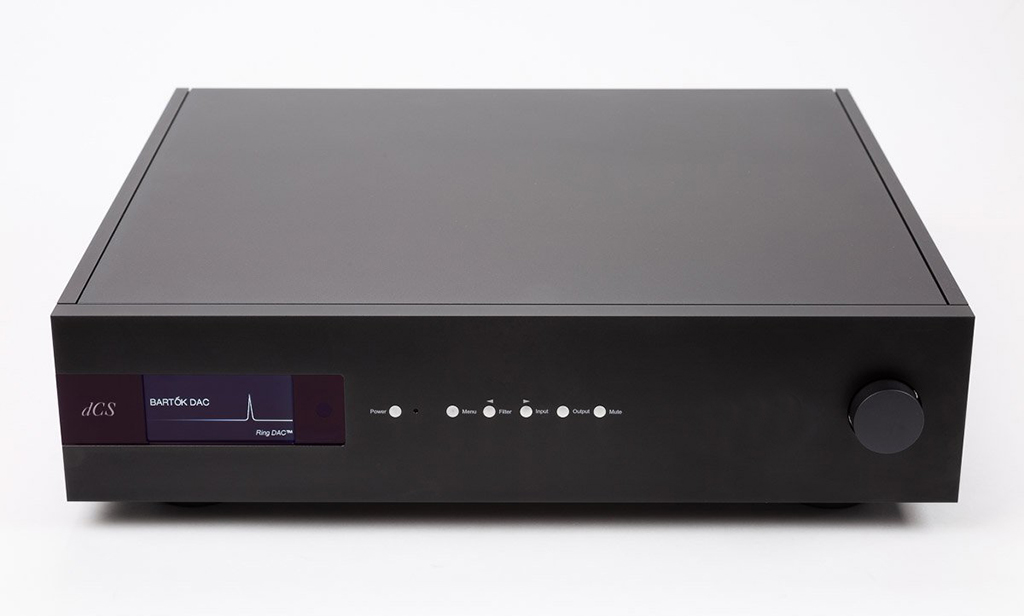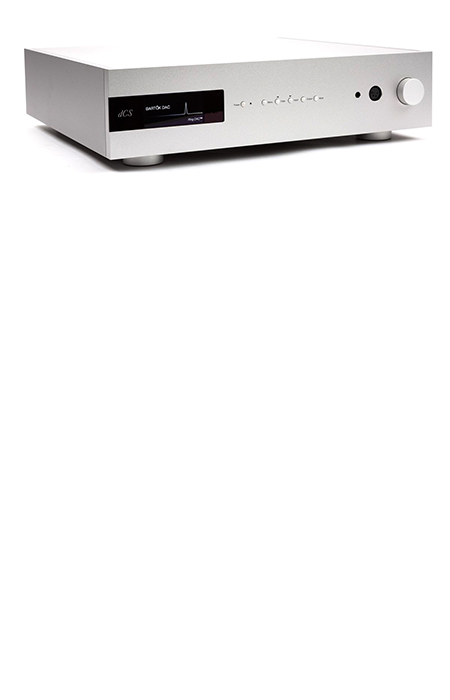The dCS Bartok: Take Two… More perspective on the dCS Bartok
By Bob Gendron Editor’s Note: A short introduction is in order for readers who haven’t always followed our narrative.
Editor’s Note: A short introduction is in order for readers who haven’t always followed our narrative.
Bob Gendron has been a contributor to TONE for almost 12 years and was also the magazine’s editor in chief for a considerable period. His knowledge of and enthusiasm for music is boundless — beyond that of anyone I know. Even though he’s never professed to be an audiophile, he’s always had a great system in his home to get closer to the musical experience.
We’ve had countless discussions about analog vs. digital, and whether digital truly delivers enough of the emotional component to be on par with analog source material. As someone who has embraced a high-end, high-quality, and high-dollar digital front end for more than a decade now, I am convinced it is, and when Bob was considering his next upgrade, I suggested the dCS Bartok. Having lived with one for nearly a year, and spent countless hours comparing it to my dCS Vivaldi One, I knew this was the solution.
Unfortunately, the current COVID crisis has made it much more difficult to audition gear in person. So, after a number of “are you sure I’m going to like it that much?” conversations, Bob took a leap of faith and purchased a Bartok. It didn’t take long for the experience to sink in. What follows is the account of a die-hard analog disciple. Again, this is NOT about one format vs. the other, it’s about getting to the point where you engage the music and get past the gear.
Mission accomplished. And now, on to Mr. Gendron…
dCS Bartok DAC
By Bob Gendron
“This machine kills vinyl addictions.”
The dCS Bartok DAC doesn’t come with that declaration. But the U.K.-devised, -engineered, and -built device certainly could. Variation on the Woody Guthrie guitar slogan aside, the 36.8-pound box supports the claim with utmost conviction and wondrous ease. A natural match with TIDAL and other high-resolution streaming services, the MQA-certified and Roon-tested Bartok flips long-held beliefs about digital like a pancake.
Let’s face it: Age-old debates surrounding analog versus digital will never abate. And that’s okay. A major benefit to owning a Bartok is that it doesn’t force you to choose sides or give up one medium for the other. Rather, it levels the playing field while providing options a great majority of DACs only dream about in their marketing hyperbole. Digital music rendered with levels of body, tonality, depth, presence, dynamics, detail, and liveliness on par with those furnished by a five-figure analog front end — coupled with SACD-like refinement, clarity, smoothness, extension, and ultra-low noise — without the harshness, sterility, brightness, and soullessness often associated with digital? Believe it. Or, embrace your inner skeptic. That’s fine, too, because once you hear Bartok in person, you will be even more elated.
There’s one hitch. Price. It lingers as the only potential drawback attached to this spectacular piece. Selling for $14,500 without the optional built-in headphone amplifier (which adds $2,750 to the ask), Bartok remains off limits to a large segment of the populace. Yet it’s important to put everything in context. Bartok exists in an industry in which five-figure power cables are touted by “experts” as being worth every penny and six-figure speakers are championed on the covers of magazines — the very same whose highfalutin editors seldom write a check to pay for what they praise and who still get to keep that exorbitantly costly gear in their personal systems under the justification of “needing to hear the cutting-edge.”
Which isn’t to suggest Bartok is a “bargain” or [insert your favorite audiophile-press cliche here]. Rather, it indicates price has become an end-all-be-all in audio, sponsoring a “keeping up with the Joneses” race that more often than not has nothing to do with performance improvements and everything to do with boasting about how much something costs — and/or, in the case of folks with walls of glowing power amplifiers and the like, how it looks. Call the practice what you want. By any name, it functions as a barricade to entry that both preserves the pleasures of superior music playback for a very select few and fuels denigrating discourse in which less-expensive gear gets treated with thinly veiled condescension in reviews and showrooms. “Oh, you can’t afford X? Well, Y is fine, I guess.”
Bartok flips a large, fat middle finger at that trend. How many of today’s components change someone’s listening habits overnight? How many save valuable time and let you hear what you want in seconds — no washing or delicate handling required? How many help provide immediate access to vast libraries and present said content in a fidelity that transforms what you sense? How many stave off obsolescence via over-the-air firmware updates that enhance operation and sonics? How many DACs feature field-programmable architecture? For that matter, how many tout their own streaming app? (And how many manufacturers take proprietary technology developed for flagship products and put it in their lower-cost offerings?)
The collective answer to all of the aforementioned questions amounts to a number you can count on one hand. Bartok is in that class. TONEAudio Editor Jeff Dorgay authoritatively covered the unit’s flexibility, connectivity, and features in his original review here; ditto its build and construction. He also correctly made the observation that it functions as a long-term investment — another Bartok trait that rails against high-end audio’s obsession with constant replacement.
As much a digital audio product can, Bartok comes on as the equivalent of a ‘60s McIntosh tube amplifier or ‘80s JBL horn speaker — classics to which people keep returning because they are that good, that reliable, that fun. Another incentive: Its seamless interfacing ability with Roon, particularly now that the platform’s 1.8 software makes streaming on Bartok an easier and smarter experience. It also should go without saying (again) that using a Bartok doesn’t mean you’ll stop spinning records. Instead, it serves as an equalizer: Granting added access, increasing options, bestowing convenience, and bringing sought-after analog qualities to digital while spotlighting albums that sound better digitally than they do on a turntable (and vice versa).
For all but the wealthiest, $15k constitutes a hefty sum. So, a bit of gentle advice. If you’re looking at a certain tier of DACs — even models selling for half as much — pause. Then, dig a bit deeper and take the plunge on a Bartok. Or, save up and bide your time. If you opt to do the latter, Tom Petty might be proven right — the waiting is the hardest part — but the payoff will reward your patience tenfold. As for the dreaded upgrade itch that inevitably circles around shortly after you make an audio purchase and encourages you to get the proverbial newest, latest, and greatest? It’ll never graze your skin.

Peripherals
Amplification Luxman L-590AXII
Analog Dr. Feickert Woodpecker with Jelco tonearm and Ortofon Cadenza Bronze cartridge
Digital Oppo BDP-105
Cabling Shunyata Delta interconnects and power cables
Speakers Klipsch Cornwall III



